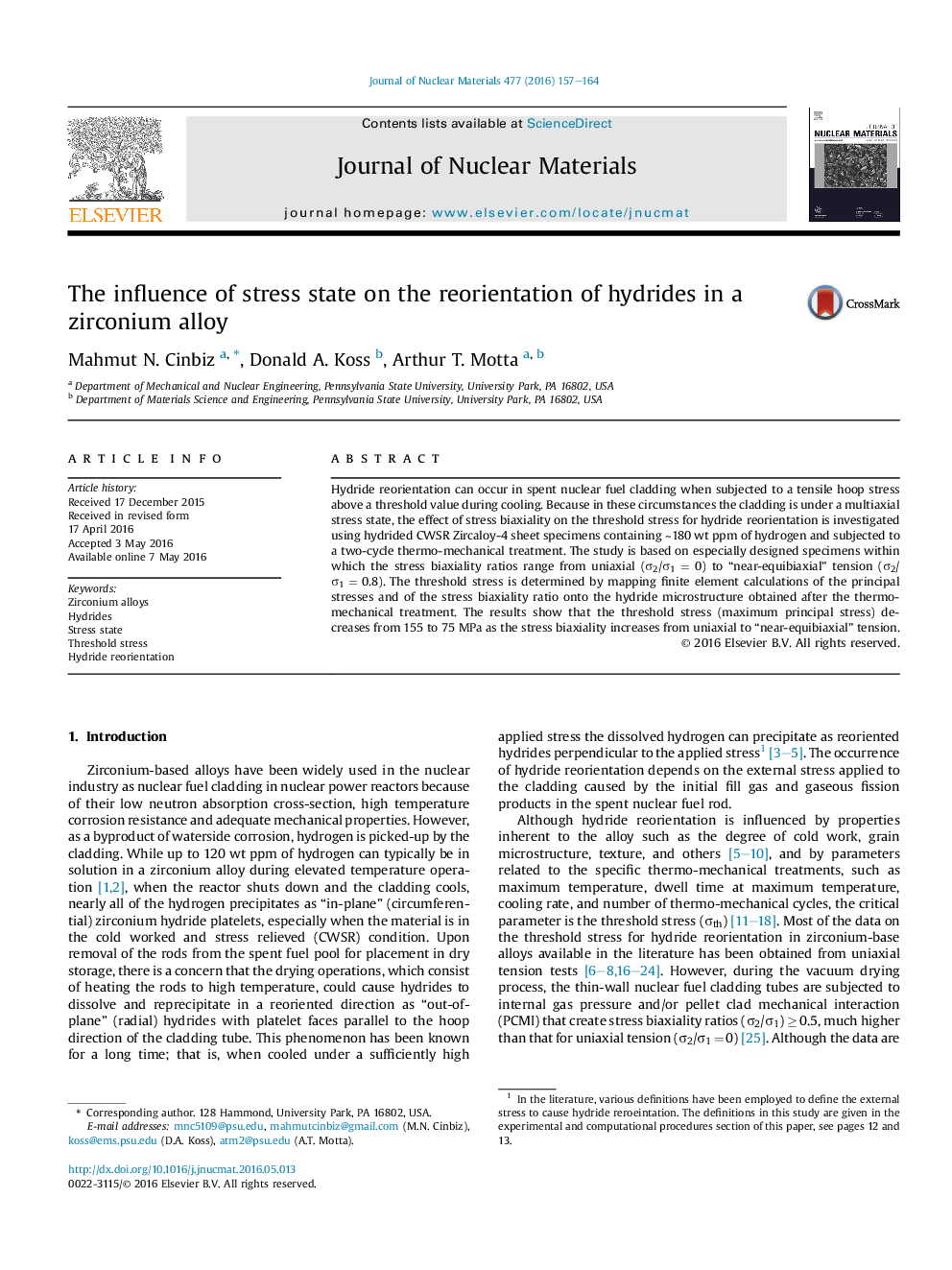| Article ID | Journal | Published Year | Pages | File Type |
|---|---|---|---|---|
| 7964185 | Journal of Nuclear Materials | 2016 | 8 Pages |
Abstract
Hydride reorientation can occur in spent nuclear fuel cladding when subjected to a tensile hoop stress above a threshold value during cooling. Because in these circumstances the cladding is under a multiaxial stress state, the effect of stress biaxiality on the threshold stress for hydride reorientation is investigated using hydrided CWSR Zircaloy-4 sheet specimens containing â¼180Â wt ppm of hydrogen and subjected to a two-cycle thermo-mechanical treatment. The study is based on especially designed specimens within which the stress biaxiality ratios range from uniaxial (Ï2/Ï1Â =Â 0) to “near-equibiaxial” tension (Ï2/Ï1Â =Â 0.8). The threshold stress is determined by mapping finite element calculations of the principal stresses and of the stress biaxiality ratio onto the hydride microstructure obtained after the thermo-mechanical treatment. The results show that the threshold stress (maximum principal stress) decreases from 155 to 75Â MPa as the stress biaxiality increases from uniaxial to “near-equibiaxial” tension.
Related Topics
Physical Sciences and Engineering
Energy
Nuclear Energy and Engineering
Authors
Mahmut N. Cinbiz, Donald A. Koss, Arthur T. Motta,
